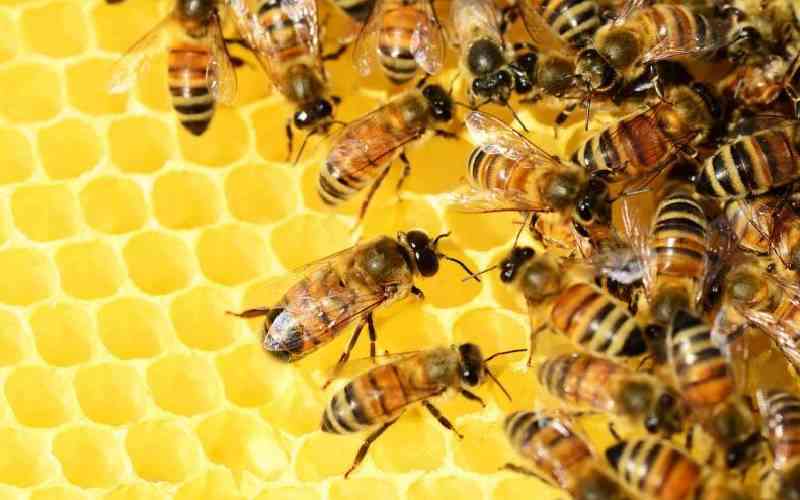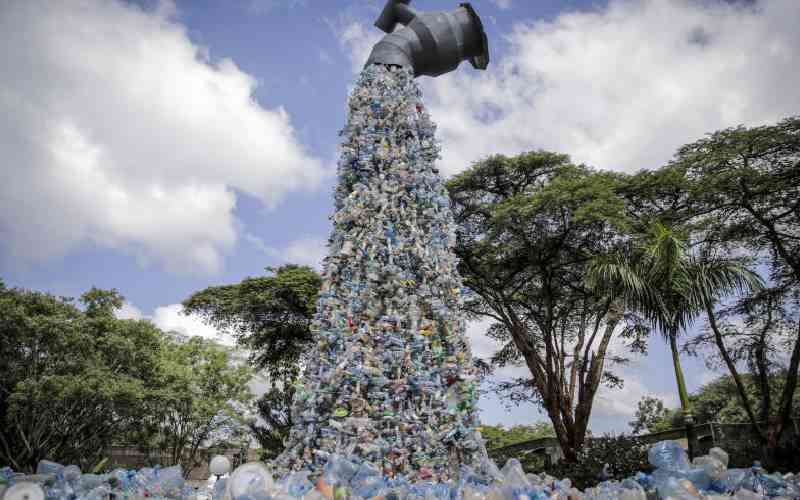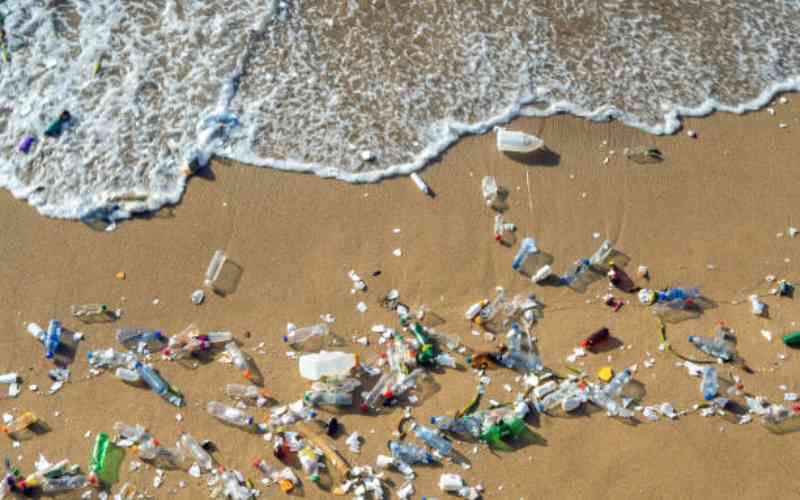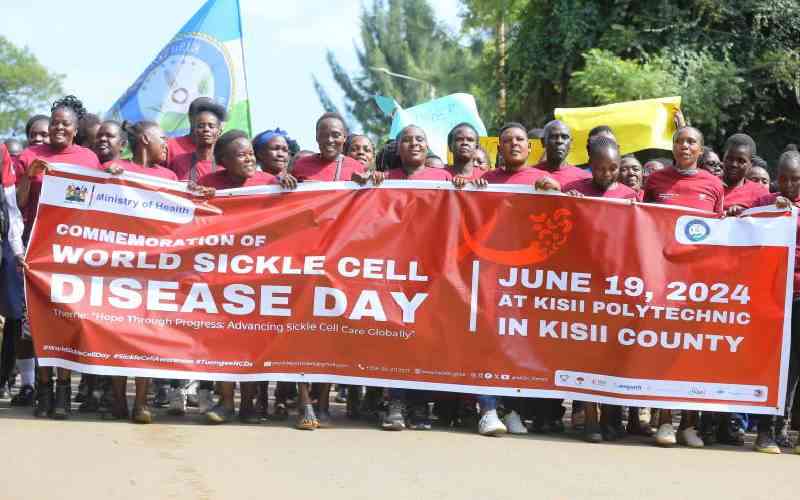
In the quiet hum of a hive lies the rhythm of survival itself. Bees, those tireless workers of the natural world, are more than producers of honey; they are guardians of biodiversity, invisible partners in agriculture, and lifelines for human survival.
Yet across continents, the buzz is fading. From the dry plains of Kenya to the vast farmlands of the United States, honeybee colonies are collapsing at an alarming rate. The crisis, scientists warn, could reshape ecosystems and destabilise food security for generations.
Between 2021 and 2022, Kenyan beekeepers lost 36.6 per cent of their colonies, with the sharpest declines recorded during periods of searing drought. Only the cooler seasons offered some respite. Researchers fear this is just the beginning: projections indicate that between 2050 and 2100, honey production in the region could fall even further.
The warning signs are not confined to Africa. Across the Atlantic, the United States National Agricultural Statistics Service (USNAS) has tracked a relentless decline in honeybee colonies since the 1960s. Records show that the number of colonies in the United States fell from 5.9 million in 1947 to just 2.44 million in 2008.
Since 2006, American beekeepers have reported average annual losses of about 30 per cent. More recently, the picture has grown even bleaker: between June 2024 and February 2025, commercial beekeepers reported losing 62 per cent of their managed colonies, the largest die-off ever recorded.
The culprits are many, but officials place particular blame on the varroa mite—a parasitic pest that feeds on adult bees, pupae and larvae while transmitting deadly viruses. Worse still, the mites have developed resistance to amitraz, a a miticide once considered a silver bullet.
Dr Mohamud Hashi Ali, an entomologist and environmental lecturer at Garissa University, draws parallels between the plight of bees in Kenya and those in the United States. In Kenya, he explains, landscape changes and reductions in flowering plants have dramatically weakened bee populations. “Human-driven changes to land use are stripping bees of the diverse flora they rely on. Without this, both survival and honey production suffer,” he says.
The situation in the United States, while more widely studied, is equally dire. Annual losses have reached 40 per cent in some years, while wild bees and other pollinators—such as butterflies and wasps—are also under threat. A recent USNAS report dated 5 July 2025 warned starkly: “The largest USA honeybee die-off is on record, with beekeepers losing over 60 per cent of their colonies at a cost of $600 million (£440 million).”
The loss matters far beyond beekeepers’ livelihoods. Honeybees contribute an estimated $15 billion annually to US agriculture by pollinating more than 130 types of fruits, vegetables and nuts. Their disappearance could devastate food systems globally.
Recognising this, US Secretary of Agriculture Brook Collins recently unveiled plans to restructure the USDA, including bolstering research centres and administering antibiotics to colonies to protect against foulbrood bacteria. Yet critics caution that such measures may offer only temporary relief in the face of deep ecological imbalance.
A shared crisis
In Kenya, the crisis is more complex and less documented, but the warning signs are no less alarming. For veteran beekeeper Onyango Paul Adero of Wambasa Usigu, Siaya, working with bees has always been a mixture of devotion and pain. “It is baptism by fire,” he recalls, remembering the sting of his early days. But the true pain, he says, lies not in stings but in watching colonies dwindle.
“There isn’t one single cause,” Adero explains. “Habitat loss from land fragmentation, climate change, pollution, pesticides, and insensitive farming practices all play a role. The loss of natural biodiversity means bees have fewer sources of food and nesting sites. Poor management, disease, pests, and invasive plants add to the burden.”
He warns that poor nutrition—caused by monocropping and the disappearance of diverse forage—has cut honey production by up to 30 per cent annually.
Paradoxically, while colonies are collapsing, global honey production has grown modestly in recent years. Between 2008 and 2018, it rose by 2.4 per cent, reaching 1.87 million tonnes. The worldwide honey market, valued at $9.01 billion in 2022, is expected to soar to $13.57 billion by 2030.
Why bees matter
Honey’s appeal is wide-ranging. Beyond its role as a natural sweetener, it is prized in medicine and cosmetics. Rich in vitamins, minerals, enzymes and antioxidants, honey is used to treat burns, wounds, swelling and coughs.
Some studies suggest antifungal and even anti-cancer properties. Yet experts caution against excess consumption, noting that honey is still a form of sugar and should be avoided by those with compromised immune systems.
Nutritionist Jeremiah Muchiri of Usigu Sub-County Hospital argues for moderation. “Taken in the morning on an empty stomach, honey can boost energy for the whole day. Taken before bed, it helps with relaxation and sleep,” he explains.
In parts of Kenya, honey retains deep cultural value. Among communities in Tana River County, it remains an essential dowry gift. “Without honey, a marriage feels incomplete,” says community leader Mohammed Lokha of Mororo township.
Adero notes that a kilogram of honey sells for between Sh800 and Sh1,000. With Kenya producing about 17 million metric tonnes annually against a demand of 47 million, the gap is vast.
The Food and Agriculture Organisation (FAO) estimates that one-third of global food production depends on pollinators like bees, highlighting the urgency of addressing their decline.
Dr Ali stresses the importance of seeing bees within a wider ecological frame. “It is of utmost importance to ask how we can live in harmony with the natural world,” he says. Pollinators such as flies, butterflies, wasps and even hummingbirds are all crucial to biodiversity. “As bees move between flowers to collect nectar, they unintentionally transfer pollen, enabling plants to reproduce.”
For Kenyan farmers, the 30-million-tonne honey deficit represents both a challenge and an opportunity. Savannah Honey CEO Kyalo Mutua believes the sector could thrive if properly supported. “Kenya has potential that remains untapped. Beekeeping could provide livelihoods while filling the honey deficit,” he argues.
Some counties are already showing progress. In 2022, Baringo produced 882 tonnes of honey worth Sh350 million, making it one of the country’s leaders.
Kitui, meanwhile, has invested in beekeeping infrastructure, with over 340,000 hives of various types. Yet production there remains low at just 1.8 tonnes annually, far below its potential.
Eutchus Katungi, chairman of Kamaki Beekeepers, warns that unscrupulous middlemen exploit farmers. “A lot of Kitui’s honey never reaches formal markets,” he laments. To counter this, the county government is strengthening cooperatives and scaling up queen bee production.
Dr Temi Mutia, a honeybee value-chain specialist, highlights innovations such as feeding queen bees royal jelly to prolong their lifespans and increase productivity. While royal jelly is naturally produced, targeted supplementation has boosted output.
Beekeeper Beatrice Mutinga in Nguni, Kitui, says training is transforming practices. “Traditional hives left everything to chance. Now we understand multiplication and modern management,” she explains. She insists Kitui honey, harvested from indigenous acacia and other semi-arid trees, is among the purest in the world.
Yet she warns of counterfeit honey diluted with cheap sugars from corn or rice. “Fake honey undermines both trust and livelihoods,” she says.
Planting for pollinators
To bolster production, the World Food Programme (WFP) has distributed 9,000 modern hives across arid and semi-arid lands since 2019.
But as Mutinga notes, hives alone are not enough. “We need to prioritise planting flowering plants and trees—acacia, marigold, sunflowers, fruit trees—anything bees love. Without forage, there is no honey.”
She explains that honey production takes about 45 days, with bees working in teams, each with a specific role. “The process is extraordinary in its precision. But it depends on forage, water, and safe environments,” she stresses.
Mutinga argues for broader strategies: botanical gardens, pollinator-friendly urban planning, and reforestation projects. “If we plant the right mix of trees and shrubs that bloom in different seasons, bees will always have a buffet,” she says.
Reviving school agricultural clubs such as 4K clubs, she adds, could nurture future generations of beekeepers.
In towns and cities, planting bee-friendly vegetation along streets and car parks would not only beautify urban spaces but also support pollinators while reducing carbon emissions.
As Mutinga concludes with a smile: “More forage means more honey, more money, and a healthier planet. Bees gift us all three—if only we care for them in return.”
 The Standard Group Plc is a multi-media organization with investments in media
platforms spanning newspaper print
operations, television, radio broadcasting, digital and online services. The
Standard Group is recognized as a
leading multi-media house in Kenya with a key influence in matters of national
and international interest.
The Standard Group Plc is a multi-media organization with investments in media
platforms spanning newspaper print
operations, television, radio broadcasting, digital and online services. The
Standard Group is recognized as a
leading multi-media house in Kenya with a key influence in matters of national
and international interest.











